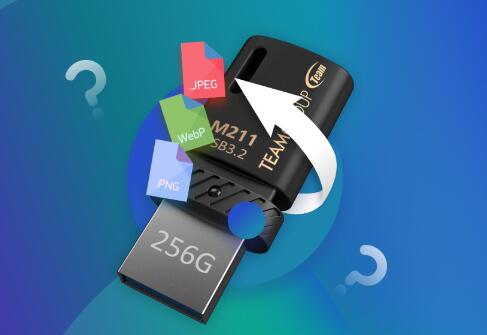Recovering deleted files from a USB drive without specialized software may seem challenging, but it’s possible using built-in system tools and command prompts.
1. USB File Deletion
When you delete a file from a USB drive, it doesn’t immediately vanish. Instead, the operating system marks the space occupied by the file as available for new data. The actual file remains on the USB drive until new data overwrites that space. Understanding this principle is crucial, as it informs your recovery strategy.
Types of Deletion
Soft Deletion: The file is moved to the Recycle Bin, and you can easily restore it.
Hard Deletion: The file is permanently deleted (e.g., using Shift + Delete), and recovery requires more effort.

2. Common Scenarios for File Deletion
Before attempting recovery, identify how the files were deleted. Common scenarios include:
Accidental Deletion: A simple slip of the finger can result in lost files.
Formatting the USB Drive: Formatting removes file references but may still allow recovery.
Virus or Malware Infection: Malicious software can delete or hide files.
File System Corruption: Issues with the USB’s file system can lead to missing files.
3. Preparing for Recovery
Before starting the recovery process, take the following steps to improve your chances of success:
Stop Using the USB Drive: Any new data written to the drive can overwrite the deleted files, making recovery impossible.
Check for Physical Damage: Ensure the USB drive is physically intact. If there’s damage, further attempts may worsen the situation.
Backup Current Data: If you can access other files, back them up to prevent further data loss.
4. Methods to Recover Deleted Files
Using Windows File History
Windows File History can automatically back up files, making recovery possible if you have previously enabled it.
Connect the USB Drive: Plug your USB drive into your computer.
Open Control Panel: Navigate to Control Panel > System and Security > File History.
Restore Personal Files: Click “Restore personal files” on the left sidebar.
Browse Backups: Use the interface to browse through your backups and locate the deleted files.
Restore Files: Select the files you want to recover and click the green restore button.
Utilizing Command Prompt
The Command Prompt can sometimes help recover files from a USB drive, particularly if the files were not overwritten.
Open Command Prompt:
Press Windows + R, type cmd, and hit Enter.
Identify the Drive Letter:
Type diskpart and press Enter.
Type list volume to see all connected drives.
Note the letter assigned to your USB drive.
Access the USB Drive:
Type the drive letter followed by a colon (e.g., E:) and press Enter.
Run Recovery Command:
Type attrib -h -r -s /s /d *.* and press Enter.
This command can help restore hidden files or those with read-only attributes.
Check for Recovered Files:
Look through your USB drive to see if the files are visible.
Exploring Previous Versions
Windows sometimes keeps previous versions of files, allowing you to recover deleted content if you have system restore enabled.
Right-Click on the USB Drive: In File Explorer, right-click the USB drive.
Select Properties: Click on “Properties” from the context menu.
Go to Previous Versions Tab: Navigate to the “Previous Versions” tab.
Select a Version: If available, choose a version dated before the deletion.
Restore or Copy: You can either restore the entire drive or copy specific files.
Checking the Recycle Bin
If you accidentally deleted files from the USB drive and they were not hard deleted, they might still be in the Recycle Bin.
Open Recycle Bin: Double-click on the Recycle Bin icon on your desktop.
Search for Deleted Files: Browse through the contents for your deleted files.
Restore Files: Right-click on any found files and select “Restore.” This action will return the files to their original location on the USB drive.
5. Tips for Successful Recovery
Act Quickly: The sooner you attempt recovery after deletion, the better your chances.
Avoid Overwriting Data: Do not save new files to the USB until after recovery attempts.
Check USB Health: Use built-in tools like Windows’ Error Checking to identify issues with the USB drive.
Keep Regular Backups: Regularly back up your important data to prevent future loss.
About us and this blog
Panda Assistant is built on the latest data recovery algorithms, ensuring that no file is too damaged, too lost, or too corrupted to be recovered.
Request a free quote
We believe that data recovery shouldn’t be a daunting task. That’s why we’ve designed Panda Assistant to be as easy to use as it is powerful. With a few clicks, you can initiate a scan, preview recoverable files, and restore your data all within a matter of minutes.
Subscribe to our newsletter!
More from our blog
See all postsRecent Posts
- Hard drive recovery denver reddit 2025-02-28
- How to recover a deleted slide in powerpoint? 2025-02-27
- How to recover deleted capcut videos? 2025-02-27










